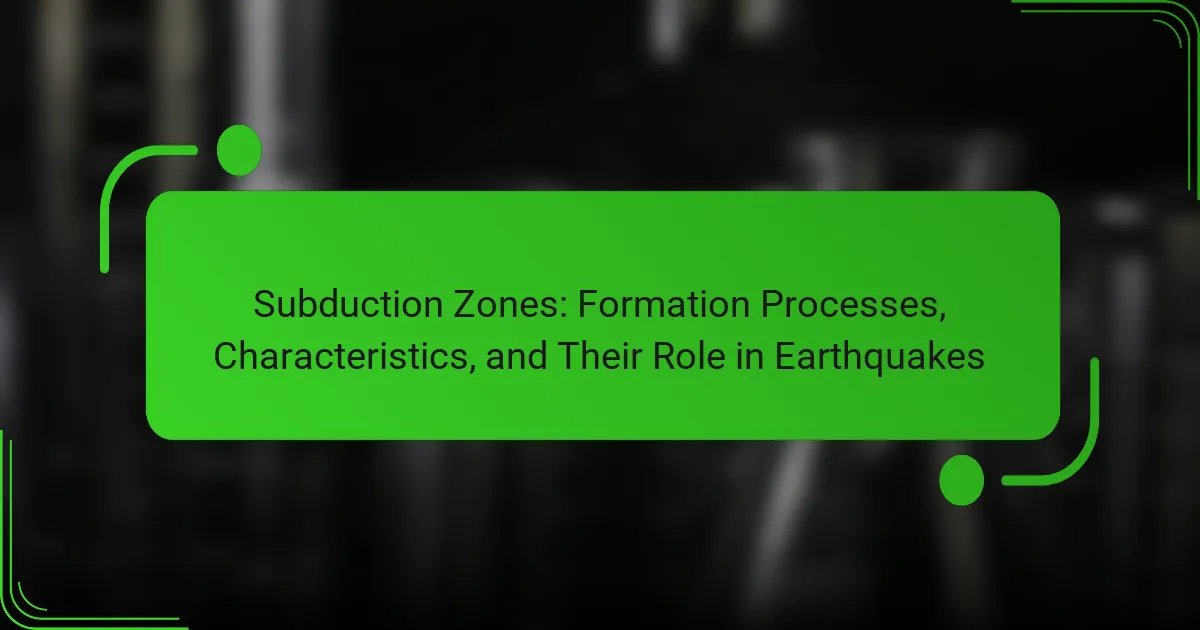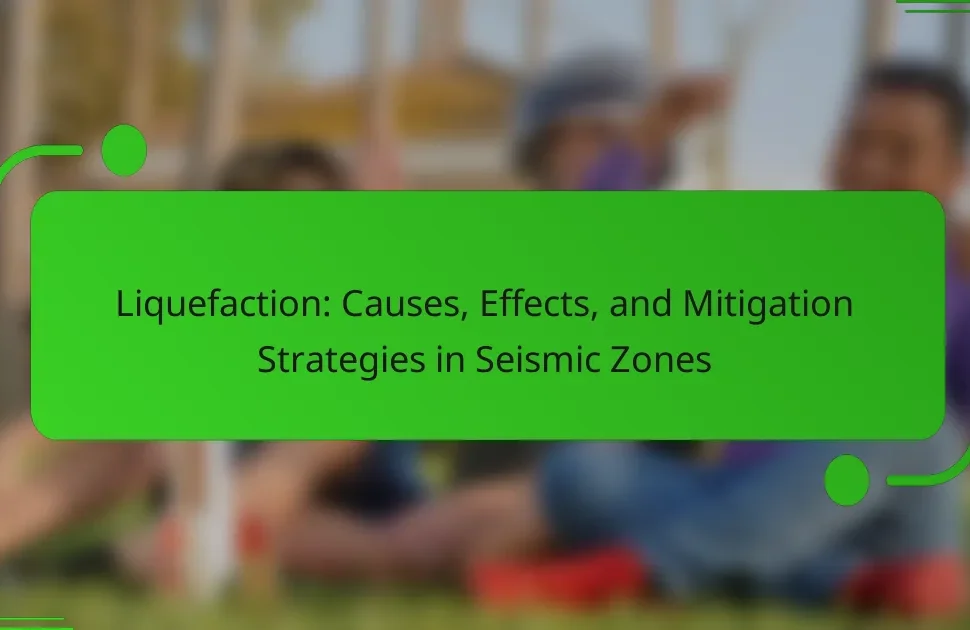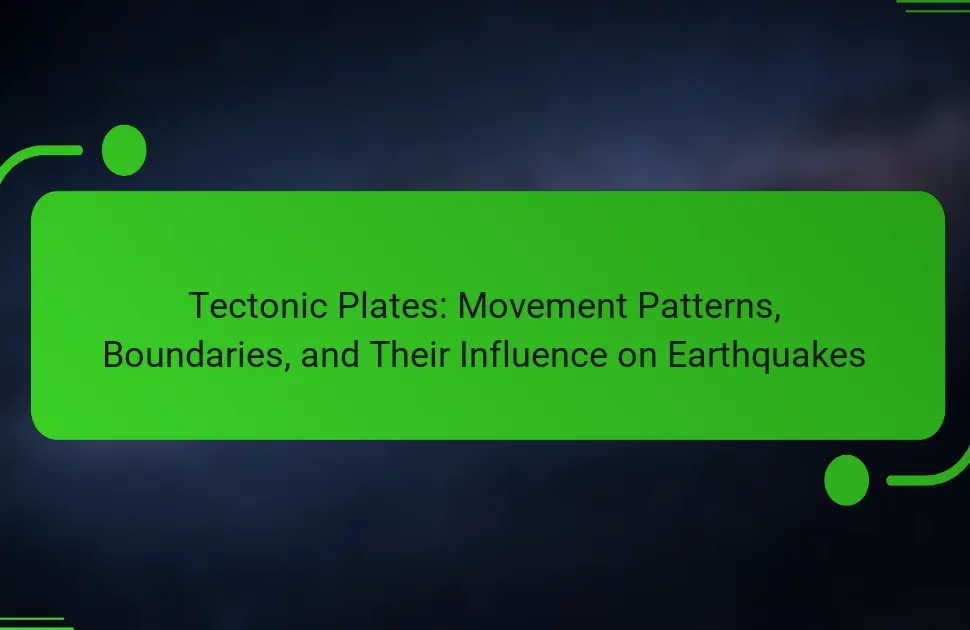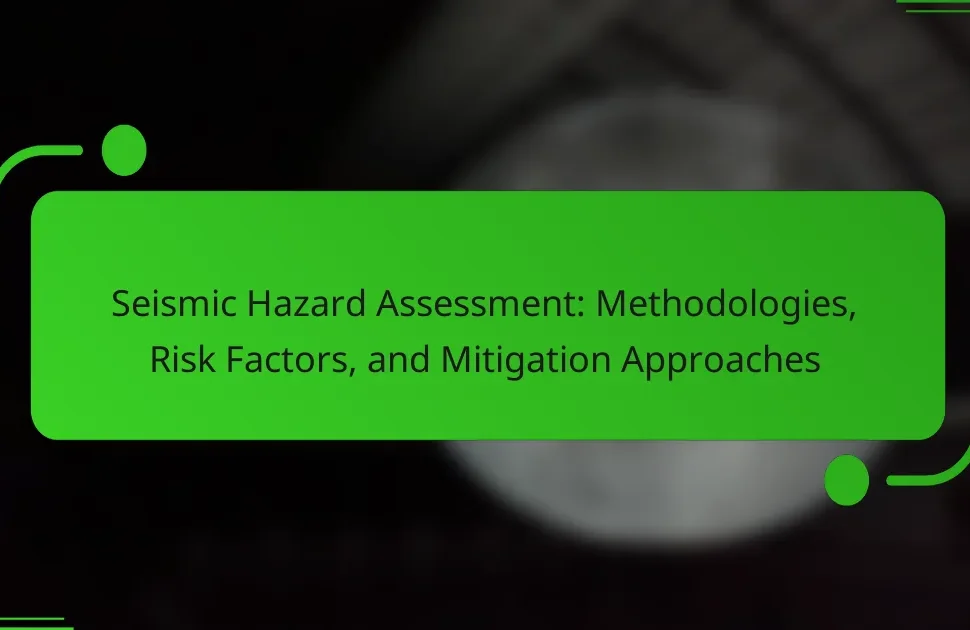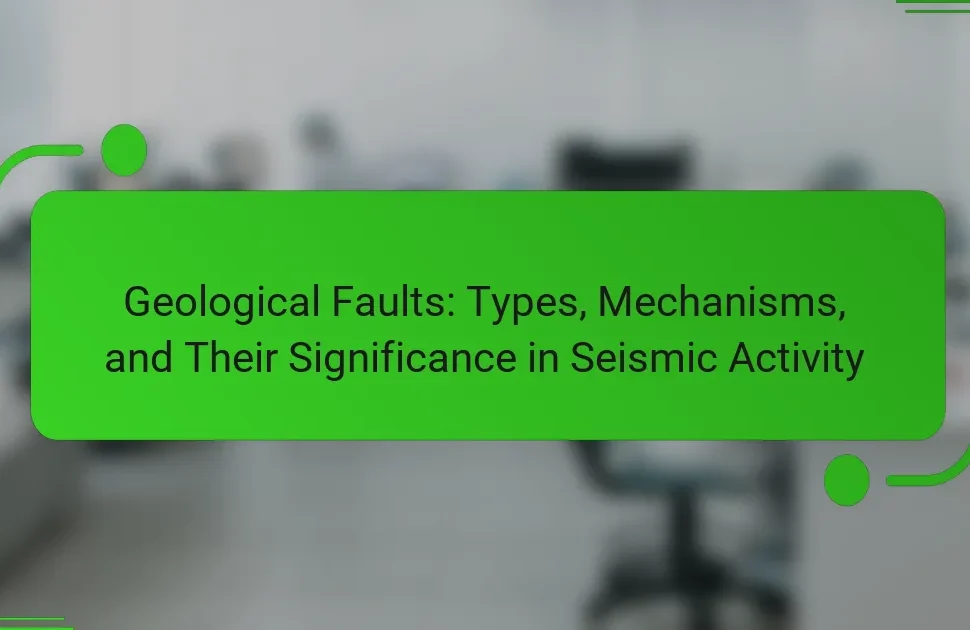Subduction zones are geological formations where one tectonic plate sinks beneath another into the mantle, primarily occurring at convergent plate boundaries. These zones are characterized by significant geological activity, including the creation of deep ocean trenches and volcanic arcs, as well as intense seismic events such as earthquakes. The article explores the formation processes and characteristics of subduction zones, highlighting their crucial role in the recycling of Earth’s crust and their impact on global seismicity patterns. Additionally, it discusses future research directions, including the mechanics of plate interactions and the influence of fluids in subduction processes. Understanding these aspects is essential for predicting seismic hazards and comprehending Earth’s geological evolution.

What are Subduction Zones?
Subduction zones are regions where one tectonic plate moves under another and sinks into the mantle. They are typically found at convergent plate boundaries. In these zones, the descending plate is usually an oceanic plate, while the overriding plate can be either oceanic or continental. Subduction zones are associated with significant geological activity, including earthquakes and volcanic eruptions. The process occurs due to the differences in density between the plates. The descending plate creates deep ocean trenches and contributes to the formation of volcanic arcs. Subduction zones play a crucial role in the recycling of Earth’s crust. They are responsible for some of the most powerful earthquakes recorded in history, such as the 2004 Indian Ocean earthquake.
How do Subduction Zones form?
Subduction zones form when an oceanic plate converges with a continental plate or another oceanic plate. The denser oceanic plate is forced beneath the lighter plate in a process called subduction. This interaction creates a trench at the subduction zone’s surface. As the oceanic plate descends into the mantle, it melts and causes volcanic activity. Earthquakes frequently occur in these regions due to the intense pressure and friction between the plates. The Pacific Ring of Fire is a prominent example of subduction zones and their associated geological activity.
What geological processes lead to the creation of Subduction Zones?
Subduction zones are created through the process of tectonic plate convergence. This occurs when one tectonic plate is forced beneath another into the mantle. The denser oceanic plate typically subducts under the lighter continental plate. This process generates intense geological activity, including earthquakes and volcanic eruptions. The movement of plates is driven by mantle convection and slab pull forces. As the subducting plate descends, it melts and contributes to magma formation. The interaction of these plates also leads to the formation of mountain ranges and deep ocean trenches. Evidence of these processes can be observed in the Ring of Fire, where numerous subduction zones are located.
What types of tectonic plates are involved in Subduction Zones?
Subduction zones involve two types of tectonic plates: oceanic plates and continental plates. Oceanic plates are typically denser and thinner than continental plates. When an oceanic plate converges with a continental plate, the denser oceanic plate subducts beneath the continental plate. This process leads to significant geological activity, including earthquakes and volcanic eruptions. The interaction of these plates at subduction zones creates deep ocean trenches and mountain ranges. Examples include the Nazca Plate subducting beneath the South American Plate. This tectonic activity is well-documented in geological studies and is fundamental to understanding plate tectonics.
What are the key characteristics of Subduction Zones?
Subduction zones are regions where one tectonic plate moves under another and sinks into the mantle. They are characterized by deep ocean trenches, which mark the location where the subducting plate descends. These zones also feature volcanic arcs formed from the melting of the subducted plate. Earthquakes frequently occur in subduction zones due to the intense pressure and friction between the plates. The interaction of plates can lead to both shallow and deep-focus earthquakes. Subduction zones are typically associated with the formation of mountain ranges and oceanic trenches. The Pacific Ring of Fire is a prominent example of a region with numerous subduction zones. These characteristics are crucial for understanding tectonic activity and geological hazards.
What are the physical features of Subduction Zones?
Subduction zones are characterized by a trench, volcanic arcs, and earthquakes. A trench forms where one tectonic plate is forced under another. This results in deep oceanic depressions. Volcanic arcs emerge parallel to the trench, created by melting subducted material. Earthquakes frequently occur in these regions due to intense tectonic activity. The interaction of plates can lead to significant seismic events. The Mariana Trench, the deepest oceanic trench, exemplifies this feature. The Andes mountain range represents a volcanic arc formed by subduction. These features illustrate the dynamic processes at subduction zones.
How do Subduction Zones differ from other tectonic boundaries?
Subduction zones differ from other tectonic boundaries by involving one tectonic plate sliding beneath another. This process leads to the formation of deep ocean trenches and volcanic arcs. In contrast, divergent boundaries create new crust as plates move apart. Transform boundaries involve plates sliding past each other without significant vertical movement. Subduction zones are characterized by intense seismic activity. This activity is due to the friction and pressure from the descending plate. The Pacific Plate, for instance, subducts beneath the North American Plate, causing the Cascadia Subduction Zone. This specific interaction results in powerful earthquakes and volcanic eruptions.
What role do Subduction Zones play in earthquakes?
Subduction zones play a critical role in the occurrence of earthquakes. They are regions where one tectonic plate moves under another and sinks into the mantle. This process generates significant stress along fault lines. When the stress exceeds the strength of rocks, it results in an earthquake. Subduction zones are responsible for some of the largest earthquakes recorded in history. For example, the 2004 Indian Ocean earthquake occurred in a subduction zone, measuring 9.1 on the moment magnitude scale. These zones also produce tsunamis, which can be triggered by underwater earthquakes. The interaction of tectonic plates at subduction zones is a primary driver of seismic activity.
How do Subduction Zones contribute to seismic activity?
Subduction zones contribute to seismic activity by facilitating the interaction between tectonic plates. In these regions, one plate moves beneath another, leading to intense pressure and friction. This pressure accumulates over time, eventually resulting in a sudden release of energy. The release of energy manifests as earthquakes. For example, the 2011 Tōhoku earthquake in Japan occurred at a subduction zone, demonstrating the significant seismic potential of these areas. Subduction zones are responsible for some of the world’s largest earthquakes, highlighting their critical role in seismic activity.
What types of earthquakes are associated with Subduction Zones?
Subduction zones are associated with two primary types of earthquakes: megathrust earthquakes and intermediate-depth earthquakes. Megathrust earthquakes occur at the interface where one tectonic plate is being forced under another. These earthquakes can release immense energy and are often responsible for significant tsunamis. Intermediate-depth earthquakes occur within the subducting plate, typically at depths between 70 and 300 kilometers. These earthquakes are less frequent but can still be powerful. Historical examples include the 2004 Sumatra earthquake, a megathrust event, and the 2011 Tōhoku earthquake, which also involved megathrust dynamics.
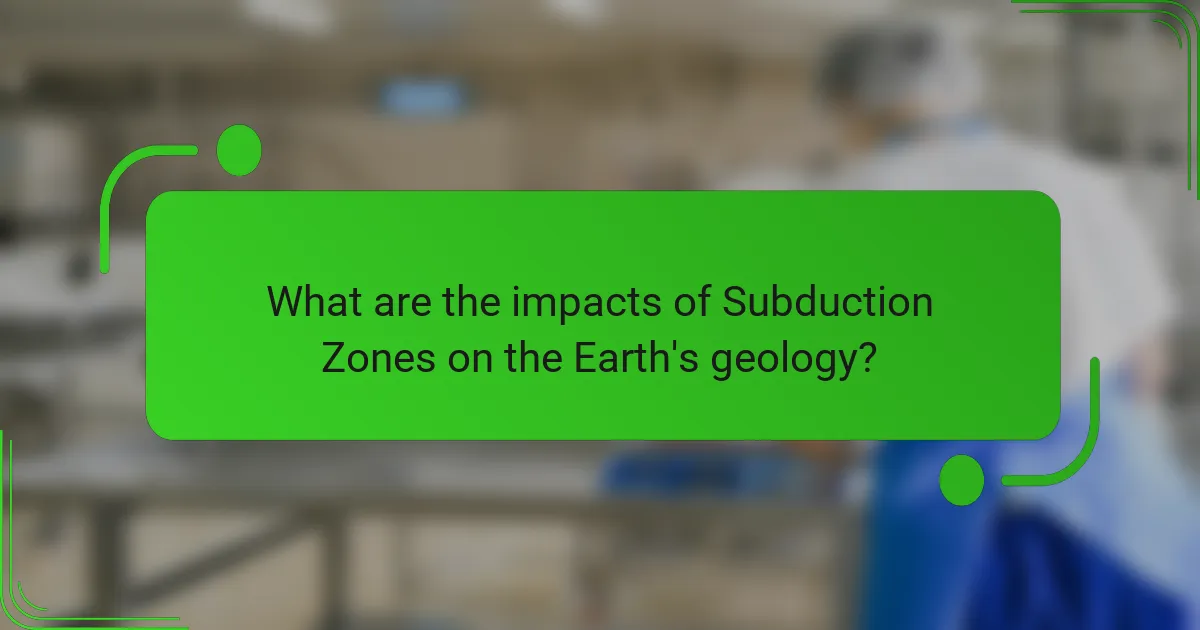
What are the impacts of Subduction Zones on the Earth’s geology?
Subduction zones significantly impact the Earth’s geology by facilitating the recycling of tectonic plates. They occur where one tectonic plate moves under another and sinks into the mantle. This process creates deep ocean trenches, such as the Mariana Trench, which is the deepest part of the world’s oceans. Subduction zones also lead to volcanic activity as the descending plate melts and generates magma. The resulting volcanic arcs, like the Andes mountains, are formed parallel to the subduction zone. Additionally, subduction zones are associated with intense seismic activity, contributing to earthquakes. The 2004 Indian Ocean earthquake, linked to subduction, caused widespread devastation. Overall, subduction zones play a crucial role in shaping the Earth’s surface and geological features.
How do Subduction Zones affect volcanic activity?
Subduction zones significantly influence volcanic activity. They occur where one tectonic plate is forced beneath another. This process leads to the melting of the subducted plate due to high temperatures and pressures. As the plate melts, magma is generated and rises towards the surface. This rising magma can create volcanic eruptions. An example is the Pacific Ring of Fire, which is known for its numerous active volcanoes. Research indicates that about 75% of the world’s active and dormant volcanoes are located in these zones. Therefore, subduction zones are critical in shaping volcanic landscapes and influencing eruption patterns.
What is the relationship between Subduction Zones and volcanic eruptions?
Subduction zones are regions where one tectonic plate moves under another, leading to volcanic eruptions. This process occurs as the subducting plate melts due to high temperatures and pressures in the mantle. The melting generates magma, which rises to the surface, creating volcanoes.
Subduction zones are often associated with the Ring of Fire, a path along the Pacific Ocean characterized by frequent volcanic activity. Historical examples include the Cascadia Subduction Zone, which has produced significant eruptions in the past. The relationship between subduction zones and volcanic eruptions is critical in understanding plate tectonics and volcanic activity.
How do Subduction Zones influence magma generation?
Subduction zones influence magma generation by facilitating the melting of mantle materials. The subduction process involves one tectonic plate being forced beneath another. This action leads to increased pressure and temperature in the subducting plate. As the plate descends, water is released from minerals, lowering the melting point of surrounding rocks. This results in the formation of magma. The generated magma is less dense than the surrounding material, causing it to rise toward the surface. This process is evident in volcanic arcs associated with subduction zones. Historical examples include the Andes and the Cascades, where active volcanism is linked to subduction.
What are the social and economic implications of Subduction Zones?
Subduction zones have significant social and economic implications. They are often associated with powerful earthquakes and volcanic activity. These natural disasters can lead to loss of life, displacement of communities, and destruction of infrastructure. For example, the 2011 Tōhoku earthquake in Japan caused extensive damage, resulting in a cost of approximately $360 billion.
Economically, regions near subduction zones may face increased insurance costs and disaster recovery expenses. This can strain local and national economies. Additionally, the threat of seismic activity can deter investment in affected areas. Socially, communities may experience trauma and long-term psychological effects due to frequent earthquakes.
Preparedness and response strategies are essential to mitigate these impacts. Governments often invest in infrastructure improvements and emergency services to enhance resilience. Overall, the implications of subduction zones extend beyond geology, affecting societal structures and economic stability.
How do earthquakes from Subduction Zones impact communities?
Earthquakes from subduction zones significantly impact communities through destruction and displacement. These earthquakes often exceed magnitude 7, causing extensive damage to infrastructure. Buildings, roads, and bridges may collapse, leading to injuries and fatalities. The shaking can trigger landslides, further jeopardizing safety and accessibility. Communities may face prolonged power outages and water supply disruptions. Emergency services can be overwhelmed, delaying response times. Economic losses can reach billions, affecting local and national economies. Historical examples include the 2011 Tōhoku earthquake, which resulted in over 18,000 casualties and widespread devastation.
What measures can be taken to mitigate risks associated with Subduction Zones?
To mitigate risks associated with subduction zones, implementing early warning systems is essential. These systems can detect seismic activity and provide alerts to populations at risk. Strengthening building codes is also crucial. Structures in high-risk areas should be designed to withstand earthquakes. Conducting regular seismic assessments helps identify vulnerabilities. Community preparedness programs educate residents on emergency response. Land-use planning can limit development in high-risk zones. Investing in research enhances understanding of subduction zone behavior. Historical data indicates that these measures reduce casualties and damage during seismic events.
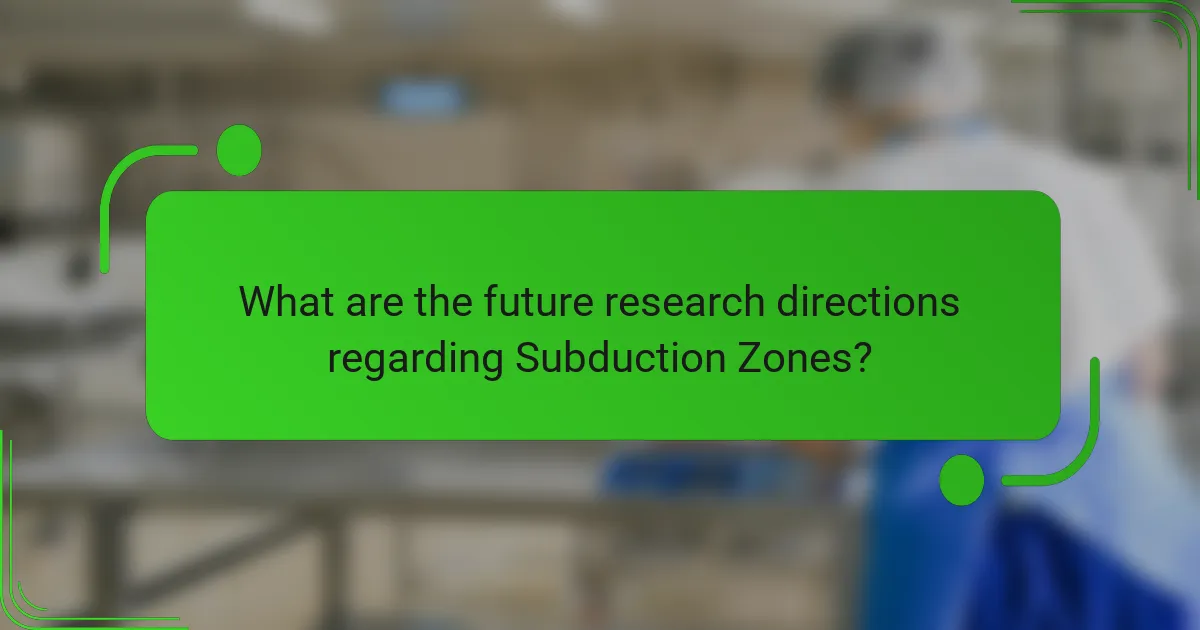
What are the future research directions regarding Subduction Zones?
Future research directions regarding subduction zones include investigating the mechanics of plate interactions. Understanding the role of fluids in subduction processes is crucial. Researchers aim to explore the influence of subduction on mantle dynamics. The impact of subduction zones on global seismicity patterns needs further examination. Studying the geochemical signatures of subduction-related magmas is also essential. Advancements in imaging techniques can enhance our understanding of subduction zone structures. Collaborative international efforts can improve data acquisition and sharing. These directions are vital for predicting seismic hazards and understanding Earth’s evolution.
What technological advancements are being used to study Subduction Zones?
Technological advancements used to study subduction zones include seismic imaging, GPS monitoring, and oceanographic sensors. Seismic imaging employs advanced techniques like tomography to visualize subsurface structures. This method helps identify fault lines and magma movement. GPS monitoring provides precise measurements of ground movement related to tectonic activity. It allows scientists to track deformation in real-time. Oceanographic sensors gather data on underwater earthquakes and tsunamis. These sensors enhance understanding of oceanic processes linked to subduction zones. Remote sensing technologies also contribute by providing aerial data on geological changes. Together, these advancements improve our comprehension of subduction zone dynamics and their potential hazards.
How can improved understanding of Subduction Zones enhance earthquake prediction?
Improved understanding of subduction zones can significantly enhance earthquake prediction. Subduction zones are areas where one tectonic plate moves under another. This process generates stress and strain in the Earth’s crust. Accurate models of these interactions can predict where earthquakes are likely to occur. Studies show that analyzing seismic activity patterns in subduction zones provides insights into potential earthquakes. For instance, the 2011 Tōhoku earthquake was linked to specific subduction zone characteristics. Research indicates that monitoring the buildup of stress along these zones can forecast seismic events. Enhanced understanding leads to better risk assessment and preparedness strategies.
What practical tips can be applied in areas affected by Subduction Zones?
Residents in areas affected by subduction zones should prioritize earthquake preparedness. This includes creating an emergency plan that outlines evacuation routes and communication methods. Residents should also secure heavy furniture and appliances to prevent them from tipping over during tremors. Stocking up on emergency supplies, such as food, water, and first-aid kits, is essential. Participating in local earthquake drills can enhance readiness. Additionally, understanding local building codes can ensure structures are designed to withstand seismic activity. Finally, staying informed about geological surveys and monitoring systems can provide updates on potential risks.
How can communities prepare for potential earthquakes from Subduction Zones?
Communities can prepare for potential earthquakes from subduction zones by implementing comprehensive emergency preparedness plans. These plans should include regular earthquake drills to ensure residents know how to respond during an earthquake. Building codes must be enforced to ensure structures can withstand seismic forces. Communities should also establish early warning systems to alert residents of impending earthquakes. Stockpiling emergency supplies, such as food, water, and medical kits, is essential for post-earthquake scenarios. Public education campaigns can raise awareness about earthquake risks and safety measures. Collaborating with local authorities and disaster response teams enhances community resilience. Historical data shows that regions near subduction zones, like Japan, have benefitted from such preparedness measures, reducing casualties during seismic events.
What resources are available for education on Subduction Zones and their risks?
Educational resources on subduction zones and their risks include academic journals, online courses, and government publications. The U.S. Geological Survey (USGS) provides comprehensive information on subduction zones. Their website features educational materials and research reports. The American Geophysical Union offers webinars and online resources focused on tectonics and earthquakes. Additionally, universities often provide free access to lectures and courses on geology. The National Earthquake Information Center (NEIC) also publishes data and research on earthquake risks associated with subduction zones. These resources are vital for understanding the geological processes and hazards linked to subduction zones.
Subduction zones are geological regions where one tectonic plate is forced beneath another, leading to significant geological activity, including earthquakes and volcanic eruptions. This article explores the formation processes of subduction zones, their characteristics such as deep ocean trenches and volcanic arcs, and their critical role in generating seismic activity. Key topics include the types of tectonic plates involved, the relationship between subduction zones and volcanic eruptions, and the social and economic implications of the seismic events they produce. Additionally, the article discusses future research directions and technological advancements in studying these dynamic geological features.
